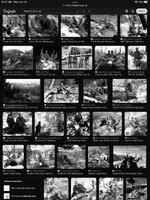muleyapprentice
FNG
- Joined
- Jan 7, 2024
- Messages
- 18
When first starting to pick up multiple tags (mule deer) across different states I valued harvest success over everything else. As the tags go by I’m finding myself choosing tags on this criteria in descending importance. Season dates (something that allows 5 full days of hunting at minimum), Public land (over my last few tags 40% seems minimum but I don’t have enough experience to be confident in that opinion) terrain type (I haven’t figured the low stuff out yet), deer population/biologist notes (much more transparent factual info on a units current productivity) and finally harvest sucess, im nearly ignoring harvest success this year and I’m hopeful for this year. What do you guys consider that I might be overlooking?

